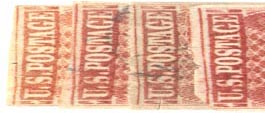
Plate 5 was removed from service in late 1851 for an unknown reason. Around the first of September 1855 the reliefs on plate 5 were re-entered from the transfer roll, and the plate was placed back in service. This re-entry, or strengthening, resulted in the late state of plate 5 (5L).
The surface of the plate suffered damage in the form of pitting or corrosion, presumably from rust, during the nearly four years it was in storage. This damage is visible in many of the stamps printed from plate 5L in the form of spots of color where there should be none. The first illustration shows four stamps printed from one of the most “rusty” positions (58R5L) of plate 5L. The rust damage is clearly evident as consistent spots of color in the “S” of U.S., and in the surrounding areas, especially in the adjacent periods and in the upper margin. The effects of the rust damage on plate 5L are a great aid to plating those stamps that show the resulting spots.

The set of stamps in the illustration also includes a good sampling of the many ink colors used in the printing of this stamp in the 1856-57 period. From top to bottom the colors are; Yellowish Rose Red, Brownish Carmine, Claret, and Brownish Carmine with more Red.
Below are some additional images of stamps showing the effects of plate 5L rust from Dr. Charles J. Di Como.







